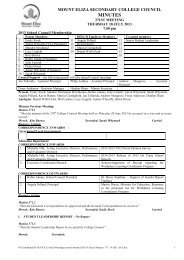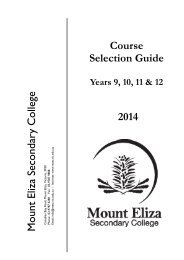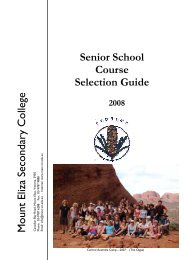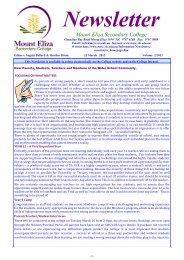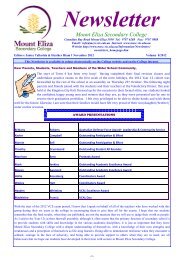manual
manual
manual
You also want an ePaper? Increase the reach of your titles
YUMPU automatically turns print PDFs into web optimized ePapers that Google loves.
›Financial managementIn order for a canteen to be financiallyviable, income from selling food must eitherbe equal to or greater than the expensesinvolved in running the canteen.Accurate costing of foods plays a very importantpart in determining income. A financiallysuccessful canteen also requires efficientmanagement of all canteen resources.The following section details why it is important to:■■■■account for all canteen moneyaccount for all stockdetermine the cost price of pre-packaged itemsand recipesdetermine the selling price of pre-packageditems and recipes per serve.Accounting for canteen moneyThe canteen needs to ensure that all canteenmoney can be accurately tracked at all times.Management of money involves:■ running off cash registers at the end of eachtrading period during the day (if applicable)■ counting money and balancing cash registersat the end of each day■ maintaining a standard float■ banking each day and keeping minimal moneyin the canteen■ accurately recording payment of all ordersand invoices■ accurately recording all cheques■ accurately recording all petty cash expenses.It is recommended that all stock should be paidfor by cheque or electronic transfer, with pettycash being used only for the purchase of items ofa minor or unexpected nature. Only a small pettycash float should be kept.School Canteens and the GSTSchool-operated canteens are non-profit bodiesunder GST legislation and can choose from twoGST methods for reporting their transactions fortax purposes – input taxed’ or ‘fully taxed GST’.The Department recommends that schools thatoperate profitable canteens use the input taxedmethod.Under this method schools code all purchases asCASES21 GST Code G13 and all sales as CASES21GST Code G04.Schools using the input taxed method do notneed to report any GST-inclusive transactionson the Business Activity Statement (BAS) to theAustralian Taxation Office.Where costs, such as electricity, cleaning,insurance, etc., are jointly used by both the schooland the canteen these costs will need to be ‘split’between the school and the canteen. For example,where a bill is for the whole school, no input taxcredits can be claimed on the portion of costs thatrelate to the canteen.In these instances the invoice should be splitcharged with the school share charged as GSTinclusive or G11 and the canteen share charged asinput taxed or G13.More detailed information on schoolcanteens and the GST is available fromwww.sofweb.vic.edu.au/tax/gst/azgst/Accounting for stockThe canteen should be able to account for stocknumbers, so that incoming stock always balancesoutgoing stock. This ensures that an accurateincome can be recorded. Records should includegoods which are disposed of due to being pasttheir expiry date, items used in meal deals, tastetestings and freebies. It is important to checkdeliveries to ensure that all stock ordered hasbeen supplied. Accurate monitoring of stockshould allow you to determine if stock is missing.Healthy Canteen Kit – Canteen Manual I 33



